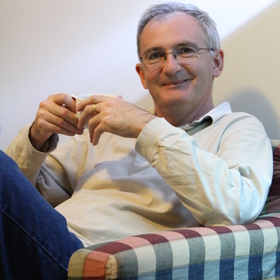
This magnificent arch, or to give it its full title, the Monument to the Three-Point Charter for National Reunification, at the end of the Tongil Expressway marks the beginning of the Reunification Highway which takes you from Pyongyang to Panmunjom on the North-South Korean border and thence to Seoul should the road be reopened, as surely it will, one day. The Three-Point Charter refers to the principles of independence, peaceful reunification and great national unity.
I have provided some detail on the highway in a review on my Panmunjom location category so will not repeat that detail here.
The 30 metre high, vaulted white granite, monument was unveiled in August 2001 (North Korean year – Juche 90) on the 56th anniversary of Korea’s liberation from the Japanese in 1945 to commemorate Kim Il-sung’s 1972 proposals to his South Korean counterpart, Park Chung Hee, for the reunification of North and South Korea. The base of the arch is adorned with typical soviet style bronzes representing the three principles of reunification referred to above, the founding of a democratic federal republic, a ten point program for national unity and the cheers of the people for a reunified Korea.
The monument expresses a hope that, one day soon, the Korean peninsula will once again be united as one country. What form of unity is envisaged is open to discussion and certainly North Korea realises that a unified socialist country under Kim Jong-un may not be immediately palatable to everyone south of the border. Accordingly, and envisaged by Kim Il-sung, the current leader’s grandfather and Eternal President of the country, North Korea envisages a form of federal government where Korea will become one entity but will have two political systems – a socialist one in the north and a democratic one in the south – similar, I imagine, to China’s “one country, two systems policy” in relation to Hong Kong.
Our guide explained how the inherent (having removed the harm done by the US) cultures of north and south were identical and how their histories intertwined. She went on to explain how the people of the two countries were identical in all respects and how they yearned for unity and the banishment of external influences – essentially, how they wished to be, and could be, self reliant – the fundamental principal underpinning Kim Il-sung’s Juche Idea.
In emphasising this point of similarity our guide invited us to point out the difference between the two ladies, dressed in traditional Chosŏn-ot (handok in South Korea) dresses and holding a map of Korea, depicted in the arch. One lady, she explained was South Korean and one was North Korean and, of course, this was somewhat of a rhetorical question as the two ladies are identical.

Original plans were to have three prongs to the monument – the current two representing North and South Koreans and a third representing overseas Koreans. The third prong, as you can see, didn’t eventuate – perhaps the planners feared traffic gridlock should there ever be more than one car passing under the arch at a time – a very rare occurrence at present.

This blog entry is one of a group (loop) of entries on The Rambling Wombat’s trip to Pyongyang, North Korea which I recommend you read in a particular order. I suggest you continue with my next entry – Victorious Fatherland Liberation War Museum Complex. If necessary, go to my Pyongyang introduction entry – Pyongyang – A Capital City Unlike any Other – to start this loop at the beginning.


